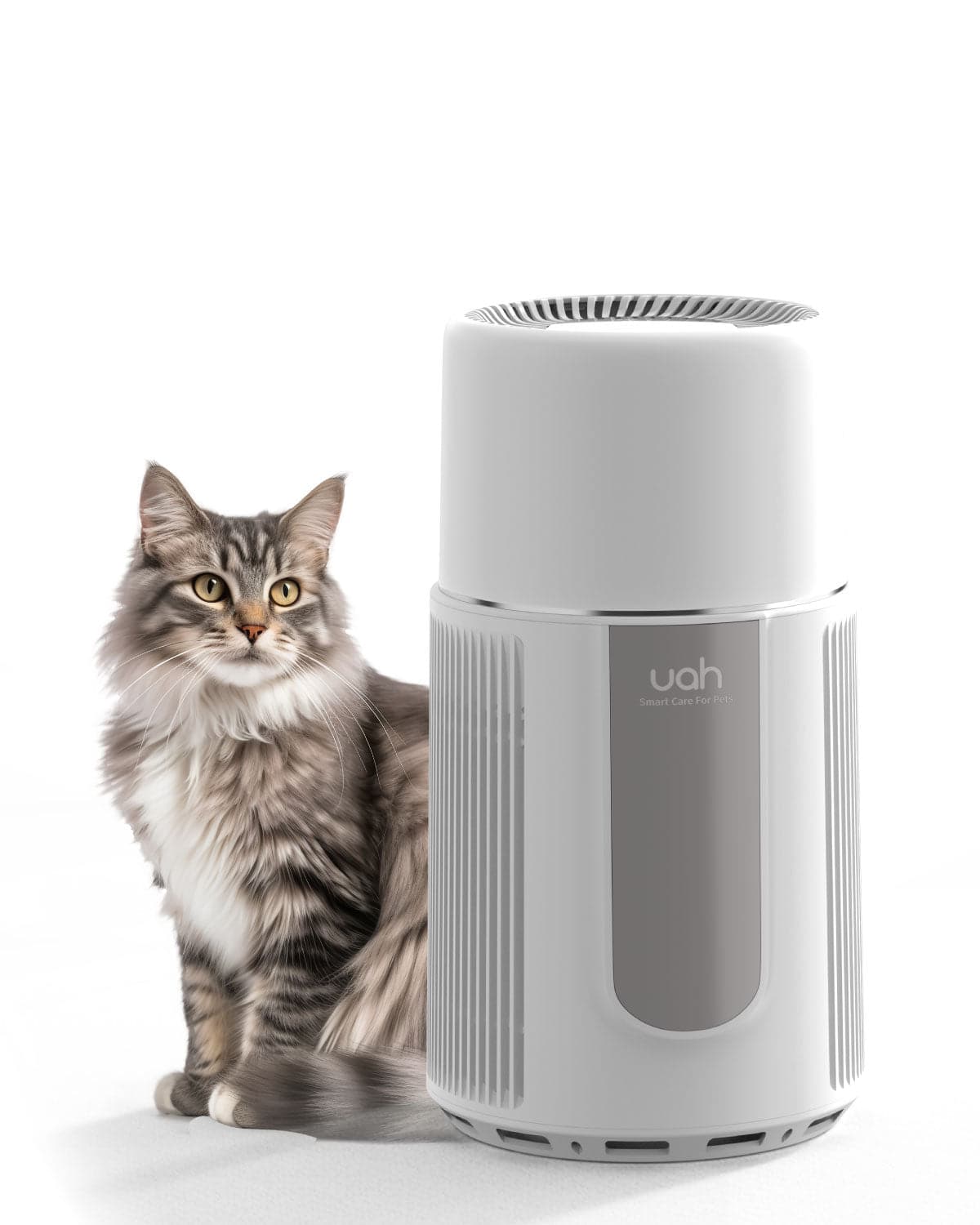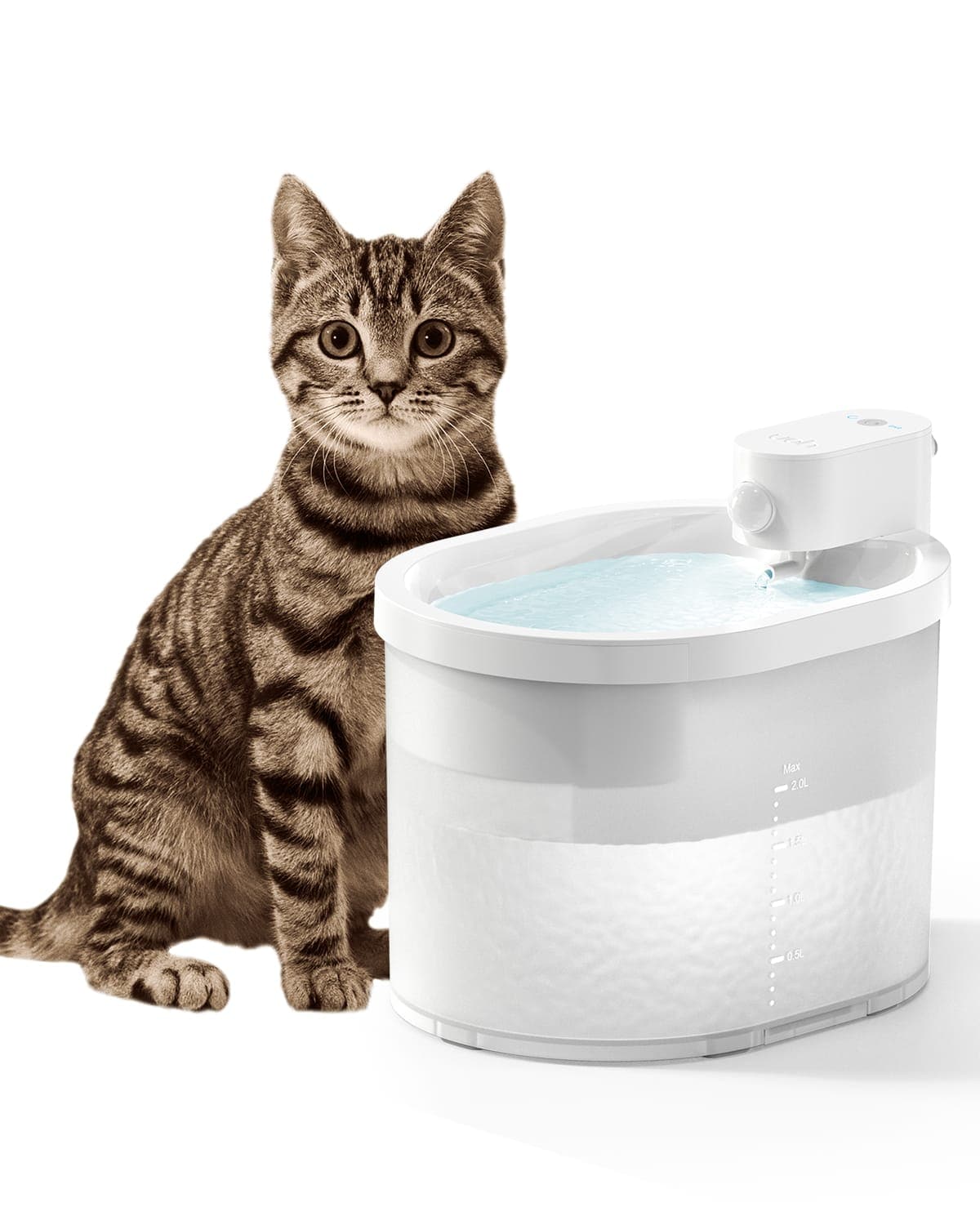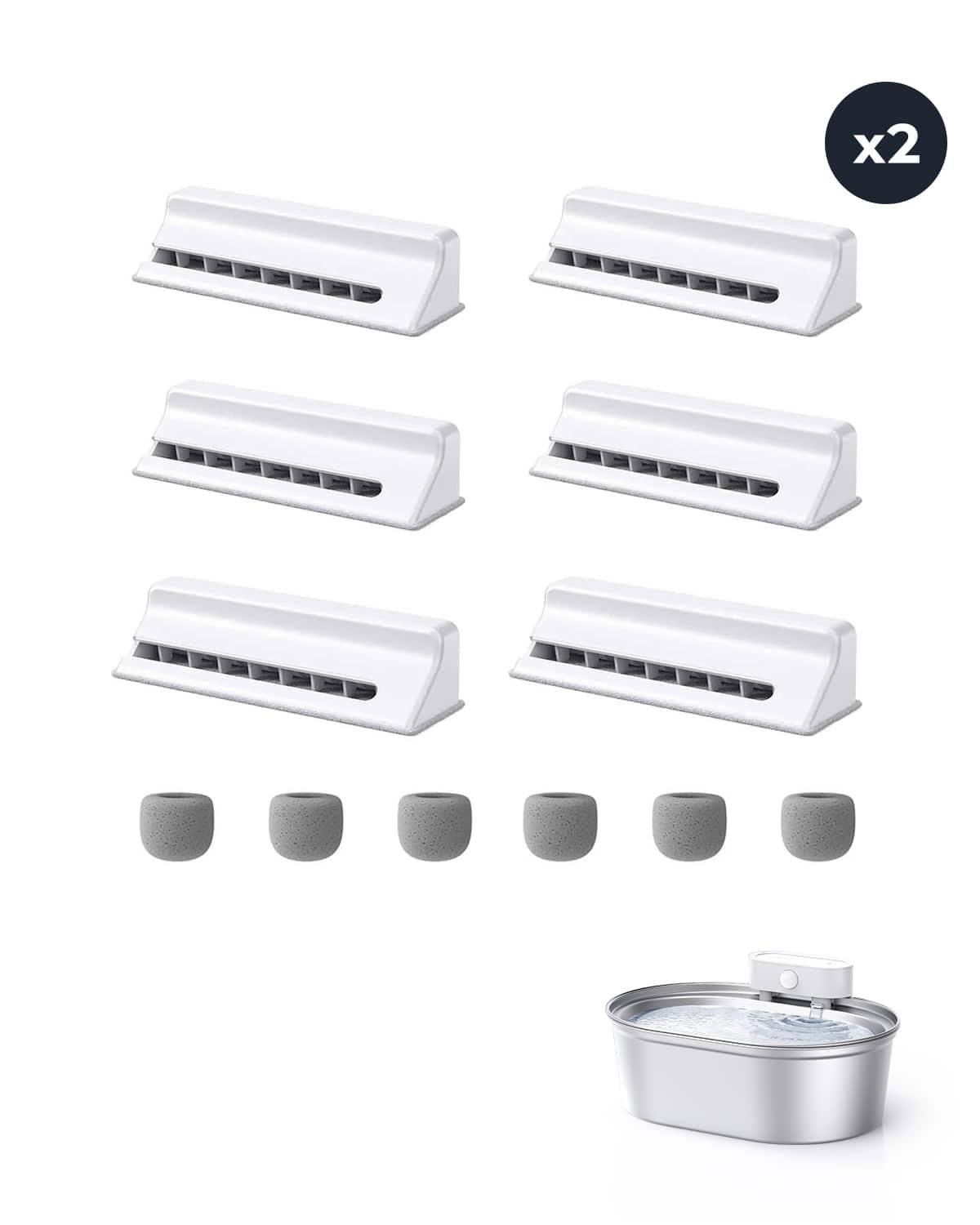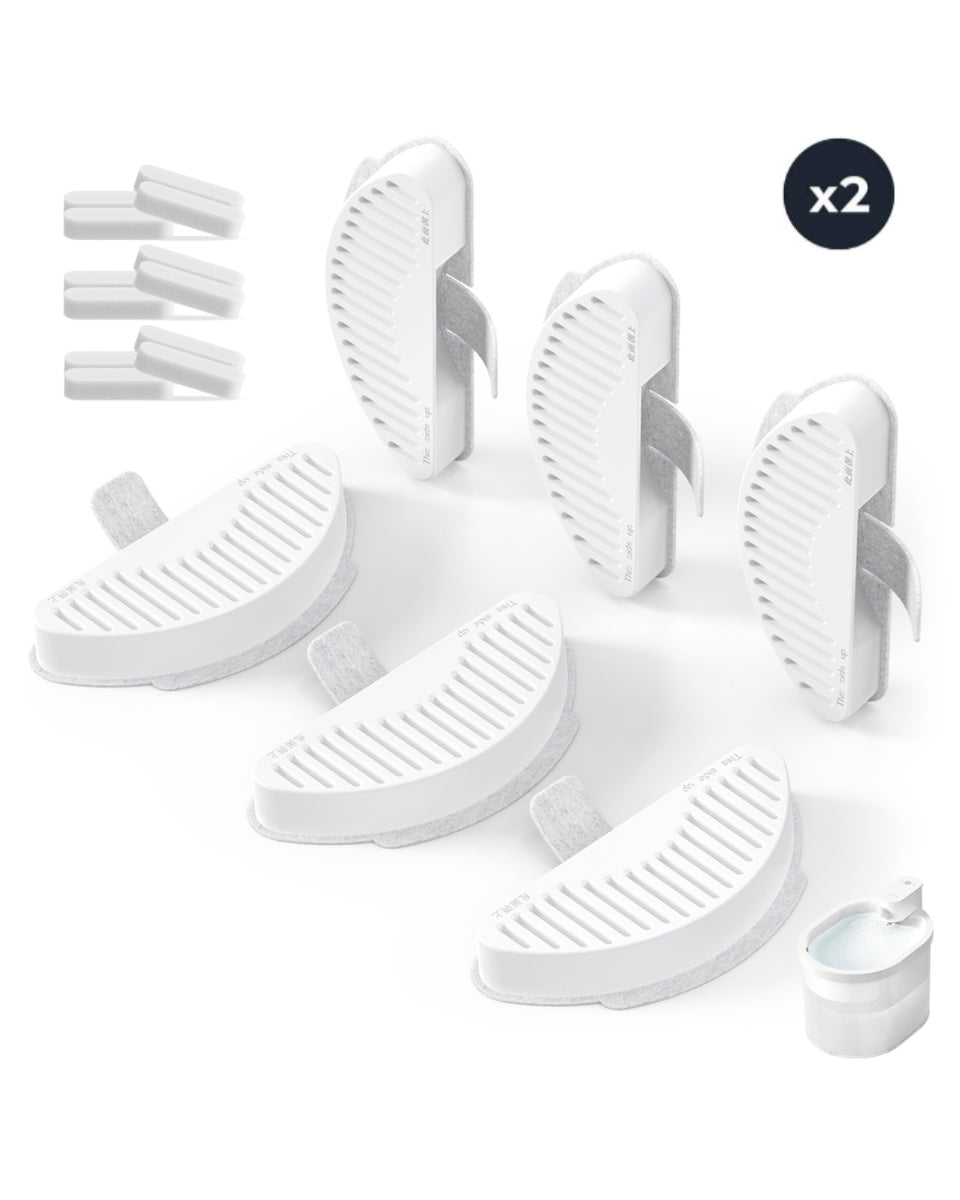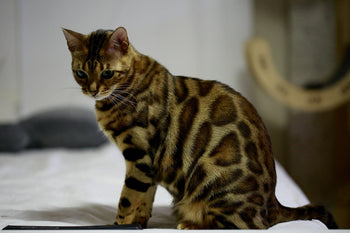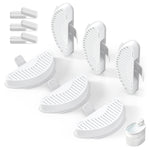How to Get a Cat to Drink Water: Tips and Tricks

How to Get a Cat to Drink Water?
If you're a cat owner, you know how important it is to keep your furry friend hydrated. However, cats are notorious for not drinking enough water. This can lead to dehydration and various health issues. So, how can you get your cat to drink more water?
Understanding a Cat's Water Drinking Habits is the first step to getting your cat to drink more water. Cats are not naturally big drinkers and prefer to get their moisture from their food. They also have a sensitive sense of smell and taste, which means they may not like the taste or smell of their water. Therefore, it's important to make sure your cat's water is fresh and clean.
Introducing a Pet Water Fountain is a great way to encourage your cat to drink more water. Cats are attracted to moving water, and a pet water fountain can provide a constant flow of fresh, clean water. You can also try adding ice cubes to your cat's water bowl or wetting their food to increase their water intake. With a little patience and persistence, you can help ensure your cat stays hydrated and healthy.
Key Takeaways
- Understanding your cat's water drinking habits is essential to getting them to drink more water.
- Introducing a pet water fountain can encourage your cat to drink more water.
- Adding ice cubes to your cat's water bowl or wetting their food can also increase their water intake.
Understanding a Cat's Water Drinking Habits
Cats are unique creatures that have their instincts and preferences when it comes to drinking water. Understanding these habits can help you encourage your cat to drink more water and stay hydrated.
Natural Instincts and Preferences
Cats have a low thirst drive, which means they are not naturally inclined to drink water as often as other animals. In the wild, cats obtain most of their hydration from the prey they consume. This means that cats may not drink water as frequently as other animals, but it is still important to ensure that they have access to fresh water at all times.
Cats also have preferences when it comes to the temperature and source of their water. Some cats prefer running water, as it may mimic the sound of a natural stream or river. Others may prefer still water, as it may be more similar to the water they would find in a puddle or stagnant pool. Additionally, some cats may prefer tap water over filtered or bottled water.
Challenges in Adequate Water Consumption
Encouraging your cat to drink enough water can be challenging, but it is important for their overall health. Dehydration can lead to kidney disease, urinary tract problems, and other health issues. Some cats may be more prone to these issues than others, so it is important to monitor your cat's water intake and make adjustments as necessary.
One way to encourage your cat to drink more water is to provide fresh water in a clean bowl every day. Cats are sensitive to the taste and smell of water, so a dirty or stale bowl may discourage them from drinking. You can also try offering your cat a variety of water sources, such as a fountain or a dripping faucet, to see if they have a preference.
Introducing a Pet Water Fountain
If your cat is not drinking enough water, a pet water fountain can be a great solution. Here are some benefits of using a pet water fountain, features that attract cats, and a recommendation for a specific model.
Benefits of Pet Water Fountains
Pet water fountains provide a continuous flow of fresh, filtered water, which can encourage cats to drink more water. This is especially important for cats that are prone to urinary tract problems or kidney disease. The flowing water also helps to oxygenate the water, which can improve the taste and smell of the water.
Pet water fountains also help to reduce the risk of bacteria growth. The filters in the fountain trap hair, debris, and other contaminants, which can prevent bacterial growth. This can help to keep your cat healthy and hydrated.
Features That Attract Cats
Cats are attracted to pet water fountains for several reasons. First, the sound of the flowing water can be soothing for cats. Second, the movement of the water can be interesting and engaging for cats, which can encourage them to drink more water.
Another feature that can attract cats is the material of the fountain. Ceramic and stainless steel fountains are often preferred over plastic fountains because they are less likely to harbor bacteria and are easier to clean. Additionally, plastic fountains can irritate a cat's whiskers, which can discourage them from drinking.
Uahpet Cat Water Fountain

Encouraging Cats to Use a Pet Water Fountain
Cats are notorious for being picky drinkers, and they often prefer running water over stagnant water in a bowl. A pet water fountain can be a great solution to encourage your cat to drink more water and stay hydrated. Here are some tips to help your cat transition from a water bowl to a pet water fountain.
Introducing the Fountain to Your Cat
When introducing your cat to a pet water fountain, it's important to place it in a location where your cat can easily access it. Make sure the fountain is placed away from their food bowl and in a quiet area where they feel safe and comfortable. You can also try placing their old water bowl next to the fountain to make the transition easier.
Transitioning from Bowl to Fountain
To help your cat transition from a water bowl to a pet water fountain, try mixing their old water with fresh water from the fountain. This will help your cat get used to the taste and flavor of the freshwater. You can gradually increase the amount of water from the fountain until your cat is drinking exclusively from the fountain.
Maintenance for Freshness and Appeal
To keep the water in the fountain fresh and appealing to your cat, it's important to clean it regularly. Most pet fountains come with instructions on how to clean them, but generally, you should clean the fountain at least once a week. You should also replace the filter as recommended by the manufacturer.
It's also a good idea to provide multiple water sources for your cat, including a pet water fountain and a water bowl. This will give your cat options and help ensure they stay hydrated.
Conclusion
In conclusion, getting your cat to drink enough water is crucial for their health and well-being. Dehydration can lead to serious health issues and even death in extreme cases.
As a cat owner, it's important to pay attention to your cat's drinking habits and water intake. You can encourage your cat to drink more water by providing fresh water in a clean bowl, placing the bowl away from their litter box, and even investing in a water fountain. A water fountain can provide a continuous flow of fresh water, which can be more appealing to cats and encourage them to drink more.
In addition to preventing dehydration, adequate hydration can also provide numerous health benefits for your cat, including improved kidney function, better digestion, and healthier skin and coat.
Remember to monitor your cat's water intake and make adjustments as necessary. If you suspect your cat is dehydrated, contact your veterinarian immediately. With a little effort and attention to detail, you can ensure that your cat stays healthy and hydrated.
Frequently Asked Questions
What methods can encourage a sick cat to stay hydrated?
If your cat is sick and not drinking enough water, you can use various methods to encourage them to stay hydrated. You can try offering them wet food, which has a higher water content than dry food, and adding water to their food. You can also offer them water in different types of bowls, such as shallow bowls or even glass bowls. Additionally, you can try offering them water from a syringe or dropper, or even ice cubes made from chicken broth. If your cat still refuses to drink water, you should consult your veterinarian.
What is the recommended daily water intake for a cat?
According to UAH Pet, a cat should drink about 2.5 to 4.5 ounces of water per 5 pounds of body weight per day. However, this can vary depending on factors such as age, activity level, and health status. It's important to monitor your cat's water intake and consult your veterinarian if you have any concerns.
Is it possible to safely hydrate a cat that refuses to drink?
Yes, it is possible to safely hydrate a cat that refuses to drink. One method is to offer them wet food, which has a higher water content than dry food. Another method is to offer them water in different types of bowls, such as shallow bowls or even glass bowls. You can also try offering them water from a syringe or dropper, or even ice cubes made from chicken broth. If your cat still refuses to drink water, you should consult your veterinarian.
How can I get my cat interested in using a water fountain?
If you want to encourage your cat to use a water fountain, you can try placing it in a quiet and convenient location, away from their litter box and food bowl. You can also try adding ice cubes to the fountain to make the water more appealing. Additionally, you can try placing treats near the fountain to encourage your cat to investigate it. Some cats may prefer running water, so you can try adjusting the flow rate on the fountain to see if that makes a difference.
What are effective ways to entice a cat to drink from a bowl?
To entice your cat to drink from a bowl, you can try offering them fresh, clean water in a shallow bowl. Some cats may prefer ceramic or glass bowls over plastic ones. You can also try placing the bowl in a quiet and convenient location, away from their litter box and food bowl. Additionally, you can try adding ice cubes to the bowl to make the water more appealing.
How can I ensure my cat stays hydrated post-surgery?
If your cat has undergone surgery, it's important to make sure they stay hydrated during the recovery period. You can try offering them wet food, which has a higher water content than dry food, and adding water to their food. You can also offer them water in different types of bowls, such as shallow bowls or even glass bowls. Additionally, you can try offering them water from a syringe or dropper, or even ice cubes made from chicken broth. If your cat still refuses to drink water, you should consult your veterinarian.



